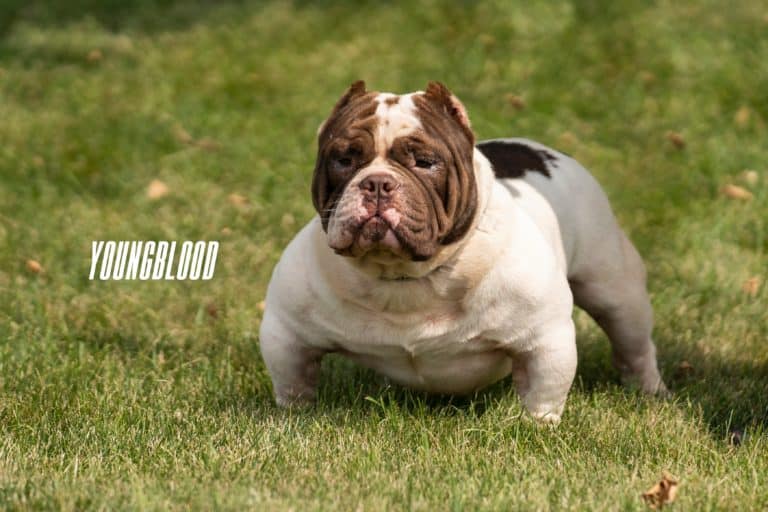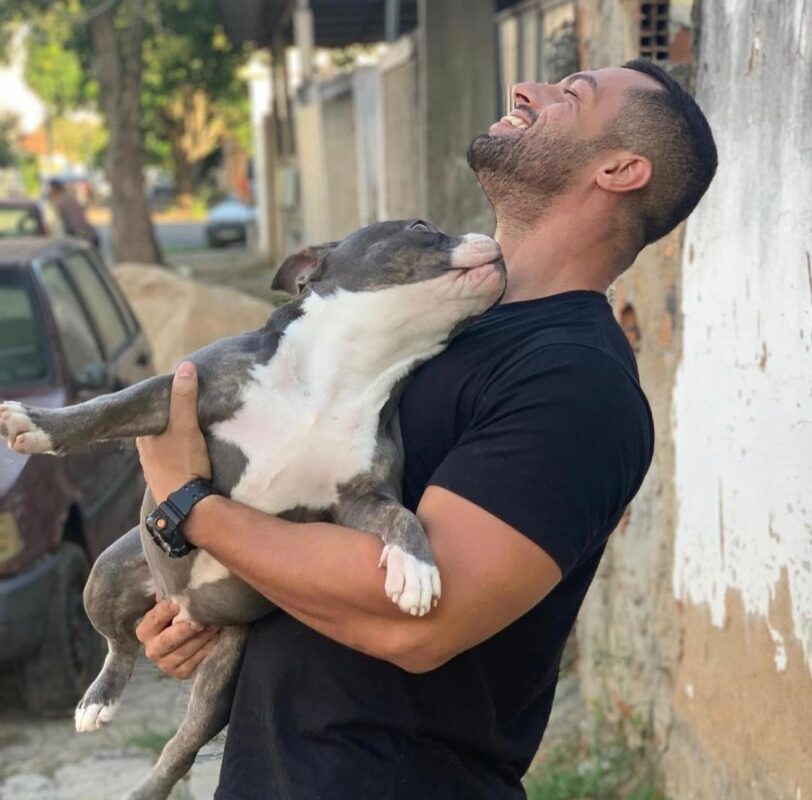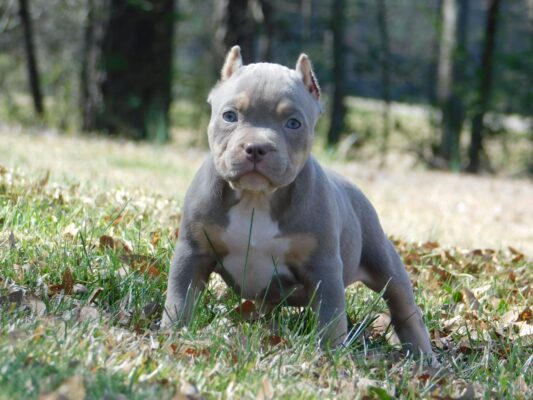The American Bully is a mix of several other breeds, and while it isn’t an old breed in itself, its predecessors can trace their lineage back thousands of years. As discussed in part 1, the breed was created to have the desired attributes of these breeds, but without any of the “bad” parts.
Part 2 in this 4 part series looks at the breed’s appearance, and where it has got these attributes. All information in this series comes from the book, The Bully King Magazine, which is a great place for anyone interested in the breed to start.
What does the American Bully look like?
The American Bully traces its heritage back to American Staffordshire Terriers, American Pit Bull Terriers, and various bulldog breeds. As these breeds all share reasonably similar traits in terms of size, muscle structure, and face, it’s no surprise that the American Bully has come out looking much like them. If anything, one of the main purposes of the breeders was to create a dog that embodied all of the desirable bulldog traits, but without any of the aggression that the breeds have been known for.
American Bullys are medium sized dogs, typically standing between 13 and 20” tall. There is smaller Bully version of the Bully called the Micro Bully, recognized by the American Bully Registry. As the breed is recognized by various kennel clubs, there are strict requirements relating to height, weight, and color. The standard weight of an American Bully is between 66 and 88lbs, making it a very stocky dog for its size.
Typically, the breed is characterized by its muscly and stocky physique, which come from its Bull Terrier predecessors. Terriers and bulldogs were typically bred for a number of purposes, including hunting and fighting, and so needed to be very powerful animals. While the American Bully wasn’t bred for these purposes, its muscly physique is one of its most desirable traits, particularly as the breed now doesn’t have the same level of aggression behind it.
The American Bully has a blocky head and medium muzzle, and its face is arguably one of its most recognizable traits. It typically has triangular pointy ears that stick up on its head. The breed is also known to have some wrinkles around its muzzle, but nowhere near the level of breeds such as the French or English bulldog. The head is generally proportionate to the size of its body, and is on the larger side, but this is balanced against its muscly body.
The breed is also characterized by its coat, which is short, bristly, and hard to the touch. The coat is generally glossy too, but typically shouldn’t be wavy or long. Its coat is dense, but isn’t double layered like some other shorthaired dogs. This means that the breed doesn’t shed as much as something like a Pug, but does still need regular grooming to keep it in good condition. Any color is accepted by kennel clubs, although the most common are fawn, grey, or a combination of colors.
The American Bully’s appearance can be traced back through its lineage of ancestor breeds, and it looks very similar to both Terriers and bulldogs. In the past, these breeds needed to be dense and stocky to make them better at their jobs, but these have now become desired characteristics in a number of breeds. However, keeping the dog to kennel standards means there is significantly less variation in appearance than before, which also means selective breeding is more important. This can sometimes lead to health complications in dogs, which are discussed later in this article.
The different types of American Bully
The American Bully Kennel Club, the industry standard for the breed’s appearance, separates the American Bully into 4 different categories. These are defined by height, but with no specification of weight. Categorization is done around 1 year of age, and puts the dog into one of the following categories:
1. Standard
This is the typical size for the breed, hence the title “standard.” Male dogs need to be between 17 and 20” tall, whereas female dogs need to be between 16 and 19”. The dogs are required to have a stocky body, block head, and defined bone structure.
2. XL
This is the tallest of the types of American Bully, and follows the same physical build as the standard dog. Males are expected to stand between 20 and 23” tall, and females between 19 and 22”. This is the largest dog accepted by the kennel, and while Bullys generally won’t get much bigger than this, if they do they won’t be accepted by the kennel club.
3. Pocket
This is the smaller range of American Bully, and again follows the same physical build as the standard category. Males stand under 17” tall, but no less than 14”. Females must be between 13 and 16” tall.
4. Micro
This is the smallest range of American Bully, and again follows the same physical build as the standard category. Males stand under 14” tall. Females less than 13″ tall
5. Classic
This type shares size traits with the standard variety, but has a much lighter bone structure. It looks more similar to the predecessor breeds of American Pit Bull and Staffordshire Terrier.
Health problems in the American Bully
Generally, most health issues are compounded in pedigree dogs, simply because they’re subject to greater levels on inbreeding than other breeds. Health issues aren’t consistent within the American Bully breed, and there generally aren’t health issues that will affect every dog. However, be on the lookout for eye problems, hip and elbow dysplasia, and possible breathing issues, although many of these won’t show until the dog is older.
Conclusion
The American Bully can trace its appearance back thousands of years, with many of the breeds barely changing in that time. However, the American Bully has been bred purely for looks and temperament, rather than its use as a working dog. This demonstrates how its general appearance has become a desirable standard for dogs, and the American Bully shows everything that was likeable about its ancestor breeds. This is the end of part 2 on appearance, but stay tuned for the next blog post on the history of the American Bully.



